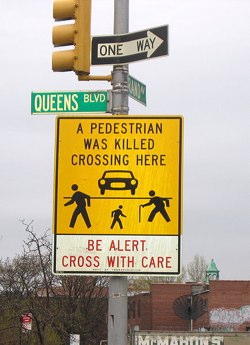New York Car Accident: pedestrian suffers serious personal injury after being struck by a drunk driver
A 26 year old man suffered serious personal injury after he was hit by a drunk driver Monday night in the Bronx, New York. The car accident happened when the man was crossing the intersection of Grand Concourse and E. 198th Street around midnight. In New York in 2012 there were 1,250 car accidents caused by drunk driving. These accidents resulted in 21 deaths and 941 personal injuries. Check out Mothers Against Drunk Driving (MADD) to see how you can help.
Read more in the New York Daily News
 New York Personal Injury Attorneys Blog
New York Personal Injury Attorneys Blog


 The third New York City Summit on Pedestrian Injury was hosted Thursday by the Elmhurst Hospital Center’s Trauma and Neurosurgery Departments. Doctors, hospital administrators, transportation and traffic safety experts as well as community activists gathered together to examine pedestrian injuries and their impact on public health.
The third New York City Summit on Pedestrian Injury was hosted Thursday by the Elmhurst Hospital Center’s Trauma and Neurosurgery Departments. Doctors, hospital administrators, transportation and traffic safety experts as well as community activists gathered together to examine pedestrian injuries and their impact on public health.  Serious skin reactions medically known as
Serious skin reactions medically known as
